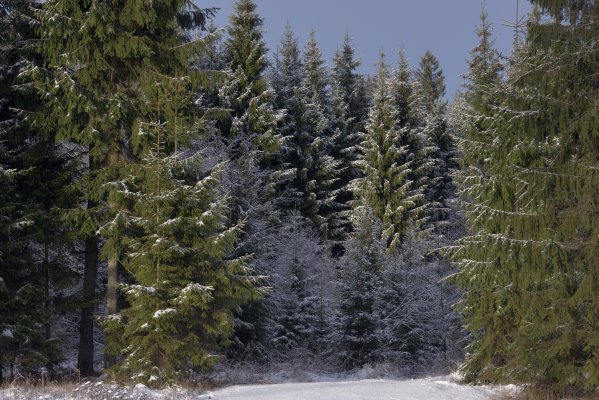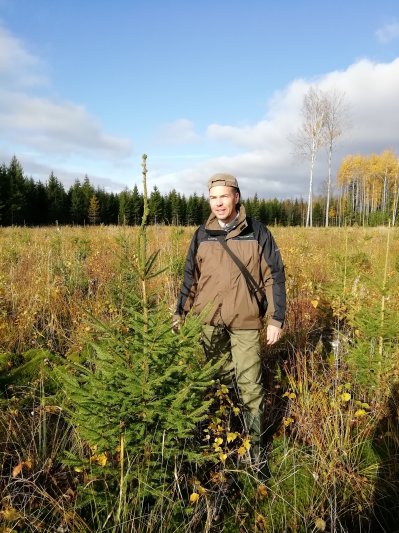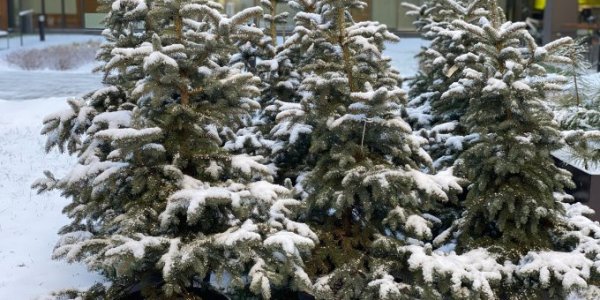Christmas Tree in the Spotlight
Picea abies or the European spruce is the only native species of wild fir in Latvia and the third most common tree species in Latvia, accounting for 17% of the total forest area. At the end of the year, it attracts a genuine interest - some people are interested in where and how it can be felled in state forests, others search for the highest quality fir trees in pots, whereas some still cannot understand how a small cone seed can eventually turn into such a large tree.
“Seeds for spruce seedlings are sown in greenhouses in special growing cassettes filled with a suitable peat substrate. Their germination capacity is not less than 96%. To protect against heat and diseases, the surface of the substrate is covered with a sterile, lightweight material called vermiculite. The young spruce trees germinate in the greenhouse within about two weeks. Spruce container seedlings can grow into a mature seedling within just one year. In turn, it takes two seasons to grow bare root seedlings,” says Guntis Grandāns, Director of “LVM Sēklas un stādi” (LVM Seeds and Plants).
LVM mainly grows spruce seedlings with an improved root system and container seedlings. Bare root seedlings with an improved root system are sown in spring (March - May) in cassettes with 50 cm3 cells (in a greenhouse). In the same year, in the second half of summer/early autumn (July-September) they are transplanted to the field and cultivated throughout the following year (fertilized, watered, weeded). This yields biennial bare root plants (25-50 cm).
Container seedlings are sown in cassettes (with a cell volume of 120 cm3) in July. They stay in the greenhouse until September, when they are transferred to growth areas equipped with watering/fertilizing rods. They are grown there the next year (watered, fertilized, weeded). As a result 20-30 cm long biennial container seedlings are obtained.
When germinating they are carefully monitored for possible disease development - wilting is dangerous, but later on the young trees must be protected from frost damage, and the growth of aphids may also hinder the growth of plants.
Before being placed in storage, the seedlings are treated with a protective coating to prevent possible damage to the large pine forests after being planted in forest areas. It is a treatment of wax “Ekovax” or special glue and sand coating “Conniflex”.
When the seedlings are ready, they are replanted in the forest. In order to provide the best possible growing conditions for young Christmas trees, they are protected against wild animals; the grass that has grown around plants and cover the sun is mowed. Spruces are thinned during the growth period because, when grown too thick, the trees do not grow beautiful and of good quality. Thinned trees are more wind-resistant and have a stronger root system because they do not have to compete with other trees. The average age at which a spruce is ready for felling is 81 years, but thinning should be done on spruce trees around the age of 10 years, when the trees have reached 8-10 metres in height. Well-tended spruce trees grow quickly and can reach human height in as little as 4 years.
Spruces in Latvia can grow tens of metres in height - 45.3 m long is the longest measured spruce in Latvia so far. The longest spruce known in Norway is 46 metres long, and also elsewhere in Europe these trees are on average as long or shorter. Spruces do not like dry and sandy places, then they wither away, are overgrown with moss. These trees like slightly acidic soil. Also on agricultural lands spruce grows very well and rapidly, and spruce stands are often formed for wood production on such soils.
During the last three years, the amount of spruce area restored in the regions of Latvia is similar. Forest restoration, with a slightly higher proportion than other regions, is in the regions of Northern Kurzeme, Southern Kurzeme and Eastern Vidzeme, which is related to the dominant role of coniferous forests in these regions.
Those looking for a Christmas tree should bear in mind that it is strictly forbidden to cut fir trees in young stands! LVM allows each resident of Latvia to cut one Christmas tree for Christmas and New Year. You can search for the most suitable tree below power lines, along road sides and in ditches. How big? Spruce stems should not be more than 12 cm thick.
LVM also grows ornamental plants, including Latvian common spruce, Serbian spruce, blue spruce and many others with different needle colour, crown shape, needle size and even sharpness. LVM Kalsnava Arboretum, where a collection of woody plants is created purposefully, has over 130 varieties of European spruce alone! Around 35 species of fir trees grow in the world, and they have a wide range of varieties that are either purposefully produced by selection or that arise naturally in nature as vegetative mutants. “Such mutations are the thickening of the so-called wind broom in the crown of the branches, where at the cellular level something has changed, the genetic code is different from that of a “normal” tree. This is the case, for example, with the 'Virgata' mutant of the common spruce, in that it does not actually form second-order branches, only the main branches, which are slender, pliable and curved like snakes on all sides.”
Choose your perfect Christmas decoration!
A wide variety of Latvian-grown spruce varieties is available at LVM nurseries and the Embassy of Latvia's State Forests in Riga, 1 Vaiņodes Street, they can be purchased, planted in pots, and in the spring trees can be transplanted into the soil. Embassy customers have free parking for 1 hour. On 30 December the embassy will be open from 9 to 16; on 31 December and 1 January the embassy will be closed.
















